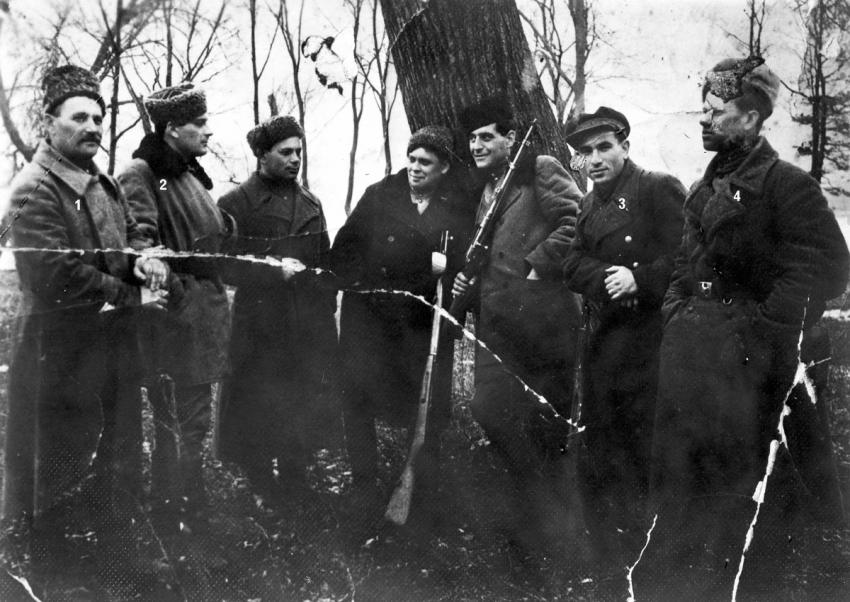In 1939, some 33,000 Jews resided in Vinnitsa, western Ukraine, constituting over one third of the city's population. When the Germans invaded western Poland in September 1939, thousands of Jewish refugees fleeing Poland reached Vinnitsa. On 22 June 1941 Germany attacked the Soviet Union, and in the third week of July, the Germans occupied Vinnitsa. Before the German occupation, over half the city’s Jews fled eastward into the USSR.
The Germans appointed a Jewish council and ordered the Jews to wear an armband with the Star of David as an identifying mark. Jews' property was confiscated, and they were seized for forced labor. The mass murder of the Jews of Vinnitsa began in late July. By mid-September, some 1,000 Jews had been murdered. Most of the remaining 15,000 Jews were murdered in two major waves, one in September and the second in mid-April 1942. Approximately 1,000 Jews with professions remained alive. They were sent to labor camps in Vinnnitsa and Zhitomir, and most were murdered in the spring-summer of 1942. Very few survived until the liberation of Vinnitsa in March 1944.
The forests around Vinnitsa were sparse, and most of their Ukrainian inhabitants were antisemites who caught Jews who had escaped the ghettos, and either handed them in to the Germans or killed them themselves. In certain areas of Europe, the Jewish resistance movements received arms from the local non-Jewish underground. This was not the case in western Ukraine, where Jewish partisans had to make their own arms, buy from locals or steal from German warehouses.
Due to the difficult conditions, the Jewish partisans active in the forests near Vinnitsa numbered just several hundred. Most were men and women who had escaped from Vinnitsa and other towns in the area after the spate of murders that took place there in the first half of 1941. These partisans focused mainly on defensive action, their mission being to stay alive. Some died in combat, such as David Shor, second from the right in the photograph. He died fighting the Nazis in 1944, approximately one year after this photo was taken. Also featured: from left: Moshe Schneider, Yaacov Talis and Ledyzanski on the far right.
Most of the Jews who escaped the ghettos and camps joined units of non-Jewish partisans and did not establish units of their own. The Vinnitsa area was one of the few where Jewish partisans formed an independent partisan unit ("otriad"). At the same time, hundreds of Jews fought in the ranks of otriads active in forests in the Haisyn and Illintsi areas, south-east of Vinnitsa. Some concealed their Jewish identity in these otriads, due to the antisemitism they encountered: sometimes the non-Jewish partisans evicted the Jews in the unit, took their weapons and even abandoned them during German manhunts.
With the liberation of the Vinnitsa district in spring 1944, the partisans joined the Red Army.
Yad Vashem Photo Archives, 4613/964







